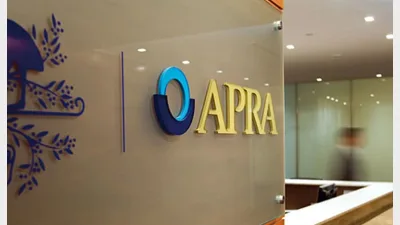How beneficial is insurance as part of superannuation.



Income protection insurance inside a superranuation fund is a great ancillary benefit for members.
Up to July 1, 2007, when reasonable benefit limits were removed within superannuation, there had been a significant increase in life insurance coverage within superannuation.
While term insurance (death cover) and total and permanent disablement have been staples of many superannuation funds, more superannuation trustees are considering income protection cover for their members.
It is permissible to have income protection as an ‘ancillary benefit’ under superannuation. As an ancillary benefit, there must also be a ‘core benefit’ like death cover (i.e, term insurance) or retirement benefits (i.e, investments) within the fund.
Until March 2007, trustees of superannuation funds could only receive a tax deduction for income protection benefits that provided a benefit period of two years or less.
Since March 28, 2007, trustees of superannuation funds have been able to claim tax deductions for income protection cover with benefit periods of longer than two years — to normal retirement age of 65.
Trustees who provided benefit periods of longer than two years to their members in the previous financial years are able to submit an amended assessment to the Australian Taxation Office to claim the tax deduction for the income protection premiums paid.
The question for the trustee then becomes, how do you provide an appropriate income protection benefit for your members?
There are three areas that need to be considered: waiting period, benefit period and monthly benefit. The most common waiting periods are 30 days, 60 days or 90 days.
The most common benefit period in superannuation is still two years, with five-year periods or benefits paid to age 60 or 65 becoming more popular. The calculation of the monthly benefit becomes the most difficult.
How does a trustee provide appropriate cover for members without over-insuring some members or underinsuring others?
Some funds provide a ‘units of cover’ approach, with one unit equal to $1,500 per month (or some other agreed amount) and automatic acceptance offered for the first unit, with the member having to undergo underwriting for any additional units.
Other funds offer a percentage of income, where the member must individually apply for their cover. The most innovative and equitable method is a multiple of Superannuation Guarantee (SG) contributions.
Employers are required to pay SG contributions of 9 per cent of the member’s salary. If the trustee uses a multiple of SG of eight, then the member will be protecting 72 per cent of their pre-disability income (9 per cent x 8 = 72 per cent).
Trustees may wish to use multiples of 9 (which replaces 81 per cent of pre-disability income) or 10 (which replaces 90 per cent of pre-disability income).
When a claim is made, the insurance company will pay any benefit to the trustees of the superannuation fund. The trustee of the superannuation fund would then pass along the benefit to the life insured (i.e, member of the fund).
Superannuation Industry Supervision Regulations 1994, Schedule 1, Item 109, states that for the purposes of a temporary incapacity, a person can commence a non-commutable income stream (i.e, not a lump sum) cashed from the regulated superannuation fund for the purposes of continuing (in whole or in part) the gain or reward that the member was receiving before the temporary incapacity for a period not exceeding the length of incapacity from employment of the kind engaged in immediately before the temporary incapacity.
What does this mean in the ‘real world’?
- The trust deed must allow the payment of a ‘temporary incapacity’ benefit.
- Both employees and self-employed individuals qualify for this benefit.
- A member may be able to receive a partial disability benefit that replaces part of their income.
- Benefits must be paid at least monthly.
- A member would not be eligible for temporary incapacity benefits if they are receiving sick leave benefits, as this normally replaces 100 per cent of pre-disability income.
- Benefits can only be paid for the period of incapacity.
- A member has the right to replace up to 100 per cent of their pre-disability income. If a member changes jobs, and their pre-disability income falls below the insured monthly benefit, any excess benefit that would provide the client with more than 100 per cent of their pre-disability income would be retained in the superannuation fund.
The Superannuation Industry (Supervision) Act 1993 (SIS Act) and Superannuation Industry (Supervision) Regulations 1994 (SIS Regs) have not defined ‘pre-disability income’. Pre-disability income may be the income the client received over the past week, month, or year.
Since there is no clarification, ambiguity exists.
The problem is that if the client is unemployed, on sabbatical, on maternity leave, or is a homemaker and not earning an income, then they may not be entitled to any benefits from the superannuation fund, even if they have been paying premiums for the cover.
So the insurance company may still be liable to pay the benefit to the superannuation fund, but the superannuation fund is not permitted to pay the benefit to the member.
Both trustees and members must be aware of the potential limitations that exist regarding maximum benefit payments and meeting the conditions of release from their fund. SR
Jeffrey Scott is the executive manager, business growth services, CommInsure.
Recommended for you
Australian super funds have posted early gains in FY26, driven by strong share market performance and resilient long-term returns.
Following the roundtable, the Treasurer said the government plans to review the superannuation performance test, stressing that the review does not signal its abolition.
The Australian Prudential Regulation Authority (APRA) has placed superannuation front and centre in its 2025-26 corporate plan, signalling a period of intensified scrutiny over fund expenditure, governance and member outcomes.
Australian Retirement Trust (ART) has become a substantial shareholder in Tabcorp, taking a stake of just over 5 per cent in the gaming and wagering company.











